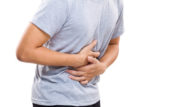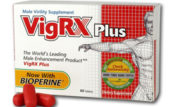 Mariah Carey, Bill Clinton, Sir Alex Ferguson, J.P. Morgan and Ricky Wilson have something in common. Aside from being famous, they’ve all struggled with rosacea: a chronic condition of redness that affects about 16 million Americans – most of whom don’t even know they have it.
Mariah Carey, Bill Clinton, Sir Alex Ferguson, J.P. Morgan and Ricky Wilson have something in common. Aside from being famous, they’ve all struggled with rosacea: a chronic condition of redness that affects about 16 million Americans – most of whom don’t even know they have it.
Rosacea is not acne, by the way, despite that they can both come with pimples and redness. Acne tends to peak in the teenage years and should be treated with anti-bacterial remedies and medicines. Rosacea, conversely, strikes between ages 30 and 50, and though we’re still learning more about this mysterious disorder, our current understanding suggests you can manage it with an anti-inflammatory.
What is Rosacea?
Ongoing redness on the nose, cheeks, chin and forehead. Rosacea is a skin condition that typically affects people with fair skin and those who blush easily. Largely genetic, symptoms of rosacea can vary among patients and include:
A flushed, red face with burning or dry, sensitive skin
Small bumps, pimples or acne-like breakouts
Thicker, coarse skin with a bumpy texture
Dry, red and irritated eyes
While uncommon, rosacea may also spread to the neck and upper back. In extreme cases and left untreated, it may permanently thicken the skin, lead to vision loss and cause knobby bumps, called rhynophyma, which can make the nose look waxy.
Researchers have yet to pinpoint what causes rosacea. We know it’s caused by something that irritates the skin. That could be a microscopic skin mite, a fungus, psychological factors or a malfunction of the connective tissue under the skin.
The National Rosacea Society – an excellent resource for rosacea patients – argues that rosacea is an inflammatory condition.
A doctor can quickly identify rosacea because of its patterns; most patients do not require medical tests for diagnosis.
Rosacea can have a huge impact on quality of life. In a survey of 1,066 rosacea patients, 76% of respondents said it lowered their self-esteem, and 88% said it affected their professional interactions. Over half of them had missed work because of a flare-up.
Acne Rosacea Does Not Exist
Although they share similarities of pimples and redness, that’s about all that rosacea and acne have in common. Acne and rosacea are different biochemically, and this is an important distinction because the bacteria that causes acne can become resistant to antibiotics. Meaning? Use antibiotics to treat acne mistaken for rosacea and the symptoms may linger.
To tell if redness is acne or rosacea, consider that:
Acne can occur on the arms and torso (Rosacea usually does not)
Acne comes with blackheads
Acne is most common during adolescence
Rosacea occurs primarily in the central face
Rosacea typically hits after 30
Rosacea can affect the eyes and produce a bulbous nose
Adding to the confusion is the term “acne rosacea”, once used to describe subtype 2 (papulopustular) rosacea, which may come with bumps and pimples that appear similar to acne. That’s where the similarities end, however, and the term “acne rosacea” is simply an incorrect description of a misunderstood condition.
Rosacea Triggers
As a rough guideline, anything that makes blood rush to the face, be it an activity, product or emotional state like anger, can trigger rosacea symptoms. Rosacea triggers can vary among patients – what leaves one person unscathed may set off a flare-up in another. This makes it all the more important to keep a journal of triggers and the symptoms they cause.
Common rosacea triggers include:
Weather conditions – Sun and wind exposure rank among the most common triggers for rosacea patients, according to the National Rosacea Society. Hot weather is a repeat offender too, along with cold.
Physical activities – Heavy exercise like weightlifting or activities with heat, like hot baths or saunas may trigger symptoms.
 Food and drinks – Hot drinks, foods, alcohol and spicy foods are likely culprits for rosacea patients with flare-ups from dietary sources.
Food and drinks – Hot drinks, foods, alcohol and spicy foods are likely culprits for rosacea patients with flare-ups from dietary sources.
Other rosacea triggers – Indoor heat, certain skin care products and cosmetics can trigger rosacea symptoms.
How to Treat Rosacea
First, you’ll want to speak with your doctor. He’ll need to rule out photodamage from sun exposure, which some people mistake for rosacea, as the source of your redness. The National Rosacea Society also recommends that patients mention their flushing symptoms and triggers to help identify an appropriate medical treatment.
Assuming you’ve brought this up with your physician, and he’s identified rosacea, he may suggest an antibiotic pill like doxycycline or a skin cream with medicine like azelaic acid or metronizadole.
Laser therapy or another light treatment called intense pulsed light (IPL) therapy may also be of interest to patients with visible blood vessels. Patients with red or irritated eyes might consider artificial tears or eyedrops with a medicine like cyclosporine.
Also, you might find it helpful to try Rosacea Relief Serum by Skinception. A topical, non-prescription application, it’s formulated with natural ingredients and patented peptides like renovage which, in a clinical study, reduced redness in 90% of volunteers by 30% or more.
Rosacea Prevention
There is no cure for rosacea. Your goal as a patient is to understand what triggers your symptoms and to avoid flare-ups with lifestyle modifications and tips including:
Use a gentle cleanser: Opt for a gentle cleanser with sodium lauryl sulfate or disodium lauryl sulfosuccinate. They’re mild ingredients that should cleanse without flushing.
Try chamomile: More than just a relaxing tea before bedtime, cleansers and soaps with chamomile are gentle and may be worth consideration, with the notable exception that patients with allergies to ragweed should not use these products.
Avoid abrasives: Abrasive products can trigger flushing. Avoid scrubs, buff puffs, and cleansing powders when possible. Wool is also a repeat offender.
Limit use of wrinkle creams: Wrinkle creams at your local drug store often contain alpha hydroxy acids, which can trigger breakouts. Avoid products with AHA concentrations more than 2.5%. You might also find it helpful to use an anti-aging wrinkle cream with cucumber extract.
 Use a cucumber moisturizer: Speaking of which, try a moisturizer with a cucumber extract after cleansing or after using a product with AHAs – while no one can explain it, evidence suggests that cucumber lotions can ease rosacea symptoms.
Use a cucumber moisturizer: Speaking of which, try a moisturizer with a cucumber extract after cleansing or after using a product with AHAs – while no one can explain it, evidence suggests that cucumber lotions can ease rosacea symptoms.
Buy cosmetics for sensitive skin: Look for skin care products with the words “for sensitive skin”. They’re not free of chemicals, but they’re generally milder and have fewer of them.
Avoid the sun: With sun exposure being the single most common rosacea trigger among patients, you’d do well to just stay out of the sun.
(Only) Use a titanium dioxide sunscreen: Don’t forget to slather up either – you’re always exposed to UV radiation when outside. Swap chemical sunscreens for a product that lists titanium dioxide as its main ingredient.
Stay cool: Remember too that heat is a leading rosacea trigger. Dress accordingly, in layers of light clothes that you can easily shed in any environment. Avoid hot baths and showers too – lukewarm will suffice.
Don’t wear wool: While you shouldn’t be cold, wool can make you hot and trigger redness and rashes. Try not to touch wool either because it’s quite abrasive.
Eat cool food: Foods with chili peppers, Tabasco sauce, horseradish and otherwise spicy fare are some of the worst foods for patients with rosacea. Swap those for dark green vegetables like broccoli, kale, asparagus and spinach. They’re all high in vitamins A, C, beta-carotene and bioflavonoids and can improve rosacea symptoms because they strenghten capillaries and help the immune system.
Easy on the alcohol: A bitter pill for some, but alcoholic beverages can trigger rosacea symptoms because they dilate blood vessels in the skin.




